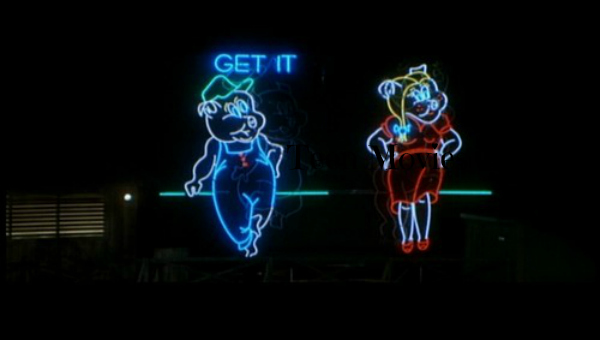
This raunchy teen comedy, a sort of remix of AMERICAN GRAFFITI via National Lampoon’s ANIMAL HOUSE, is about a group of horny senior high school fraternity boys in 1950’s Florida itching to score before they graduate – and most of their time is spent in pursuit of said goal.
The title refers to a redneck establishment out in the Everglades known for its available women. After being embarrassingly turned away on their first visit, the boys return to wreak havoc on the place, proving once and for all that violence will result when the sex drive is repressed. PORKY’S made a ton of money worldwide, and executive producer Harold Greenberg built his Montreal-based Astral Communications empire on its profits. It spawned two sequels, PORKY’S II: THE NEXT DAY (1983) and PORKY’S REVENGE (1985), and has enshrined itself as one of the most reviled films in the Canadian canon. The reviews at the time of its release were so harsh – Variety called it “astonishingly vulgar… has to be seen to be believed” – that PORKY’S has been dismissed as an aberration, a bad joke; however, given the vulgar comic extremes of later films such as AMERICAN PIE (the director of that film, Paul Weitz, claims PORKY’S was the inspiration for his film), today the juvenile, foul-mouthed humour of PORKY’S seems more like a harbinger of things to come.
So what do you say about a film that begins with an erection?
Amongst the cast of virtual unknowns, PORKY’S features a young Kim Cattrall (who was born in Liverpool but raised in the Canadian province of British Columbia, and studied acting in NYC) in an unenviable role as a repressed gym instructor nicknamed “Lassie.” She would later achieve stardom as the sex-obsessed Samantha in the Sex and the City series and movies. Canadian Susan Clark, one of Porky’s savvy employees (and, at the time, wife of director Bob Clark), went on to a starring role in the American series Webster (1983–89). The leaders of frat pack are Pee Wee (Dan Monahan, who stands out as the virgin runt of the gang), prankster Billy (Mark Herrier), impulsive Tommy (Wyatt Knight), the impassive hulk Meat (Tony Ganios) and emotionally troubled Tim (Cyril O’Reilly). None of theses actors apart from O’Reilly (who had a sustained career in television) had much of a career beyond the three Porky films.
So what do you say about a film that begins with an erection? Right there, before your eyes, under the pastel blanket in a Florida bungalow while Patti Page, who is all the rage, is on the radio. Pee Wee measures his morning pleasure with a wooden ruler that he keeps at his bedside for this specific purpose. He also records in findings on a chart. This tells you right away that Porky’s is being up front with its theme, which, in a nutshell is: what to do with this troubling thing? God knows, this is a pressing question, and we are yet again thrust into a revisionist 1950s American high school with girls who put out, girls who don’t and girls who are referred to as “dogs.” (Cats get equal time, but if you are smart you don’t have to ask why.)
PORKY’S is a crafty, deeply offensive retro-fantasy…
We are obviously in degraded AMERICAN GRAFFITTI country, in pubescent ANIMAL HOUSE country, and in sour MEATBALLS country. No one actually sticks pencils in their noses in Porky’s, but the old throw-up scene is considerably spiced up when Meat passes out, sputtering, in bowl of chilli. As the resident high school nympho, Wendy (Kaki Hunter) thinks nothing of hopping into a bus and doing Pee Wee the ultimate favour while his buddies stand around cheering. Women are allowed their libidinous moments here, but only if those moments relate to the pressing question at hand. Billed as the funniest movie ever made about growing up, PORKY’S is a crafty, deeply offensive retro-fantasy made for adolescent males worldwide.
Co-produced, written and directed by the American Clark, who was working in Canada during the tax-shelter years (1974–81), PORKY’S was partly financed in Canada, and it won the Golden Reel Award for the highest-grossing Canadian film of 1982. The worldwide box office was so huge (exceeding $100 million on a budget of $4 million) that with the exception of the Canadian-German co-production RESIDENT EVIL: AFTERLIFE 3D ($250 million worldwide, released 30 years later), no other Canadian film comes close.
httpvh://youtu.be/QWmtDAIK03M

